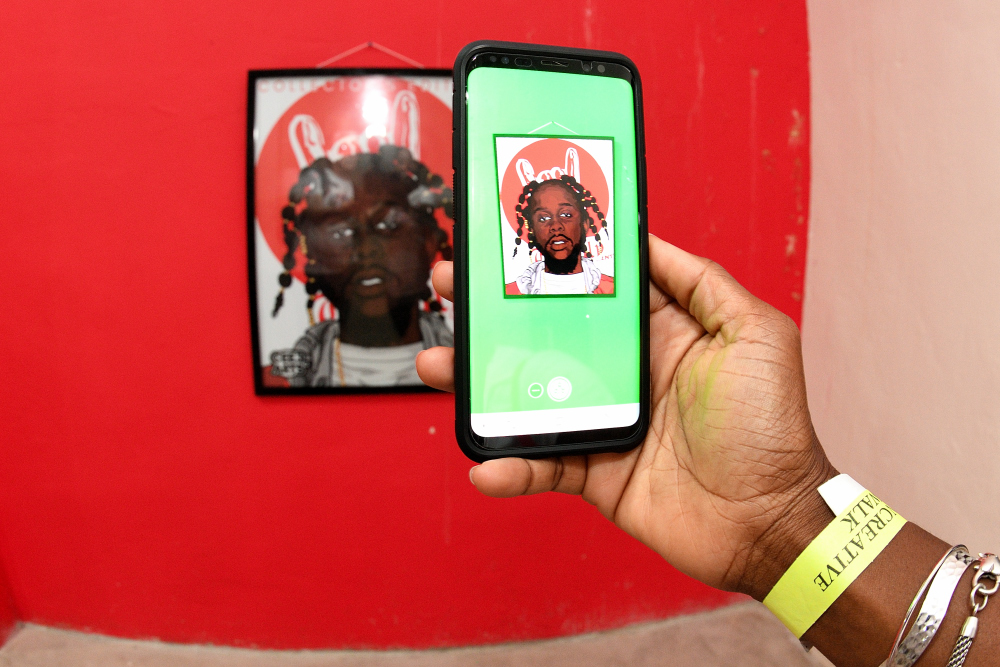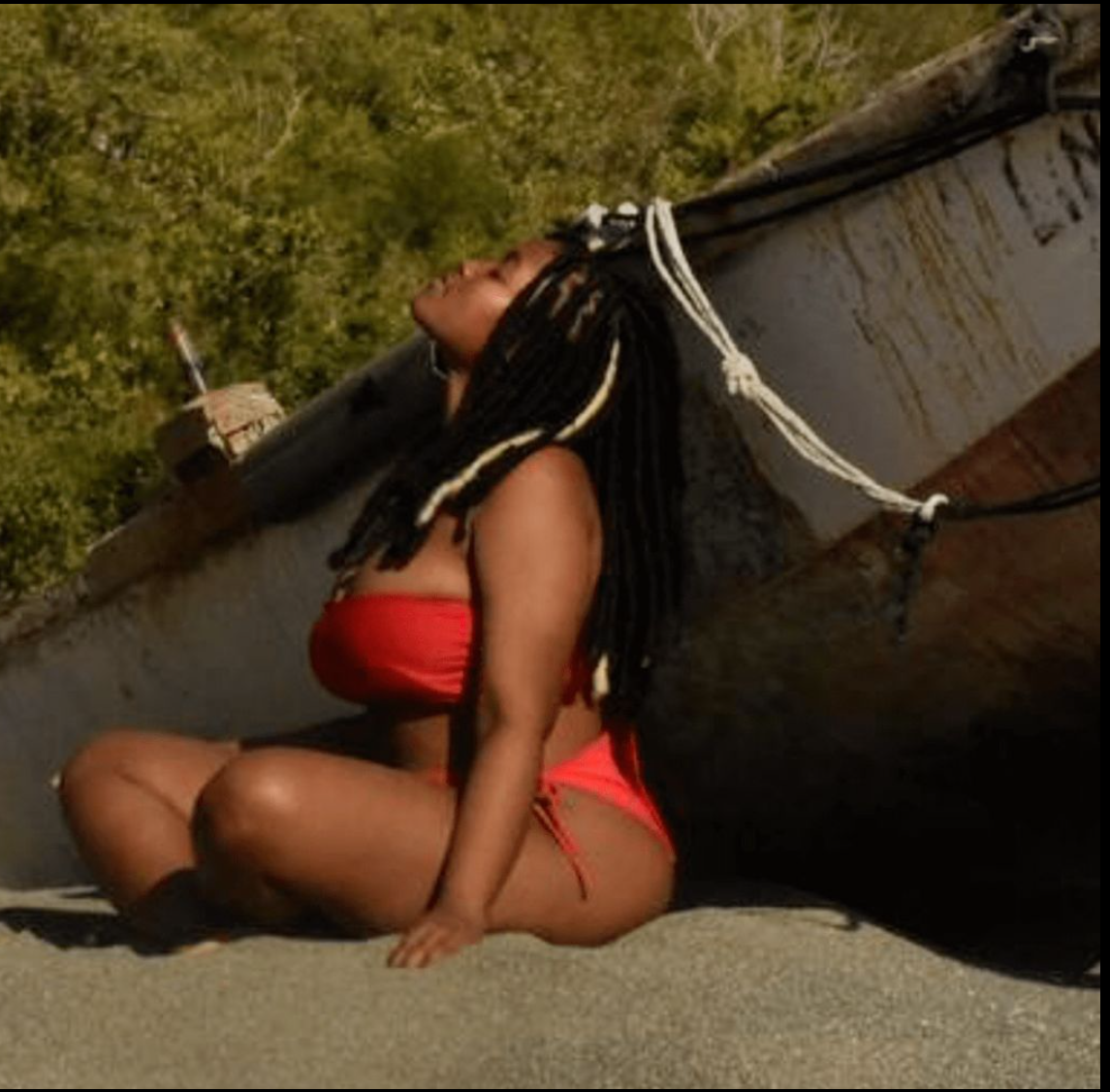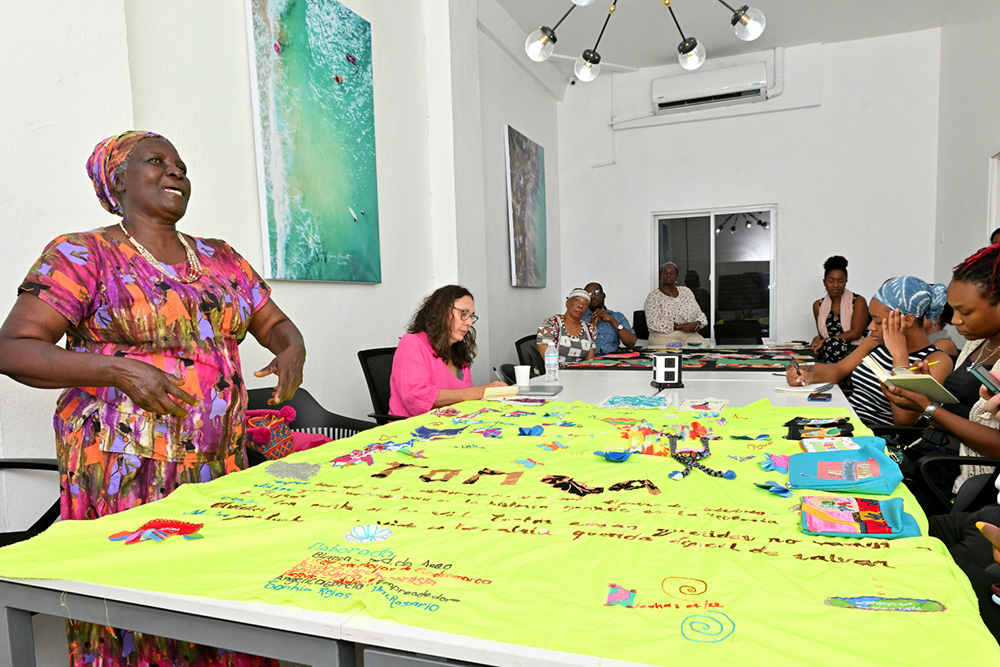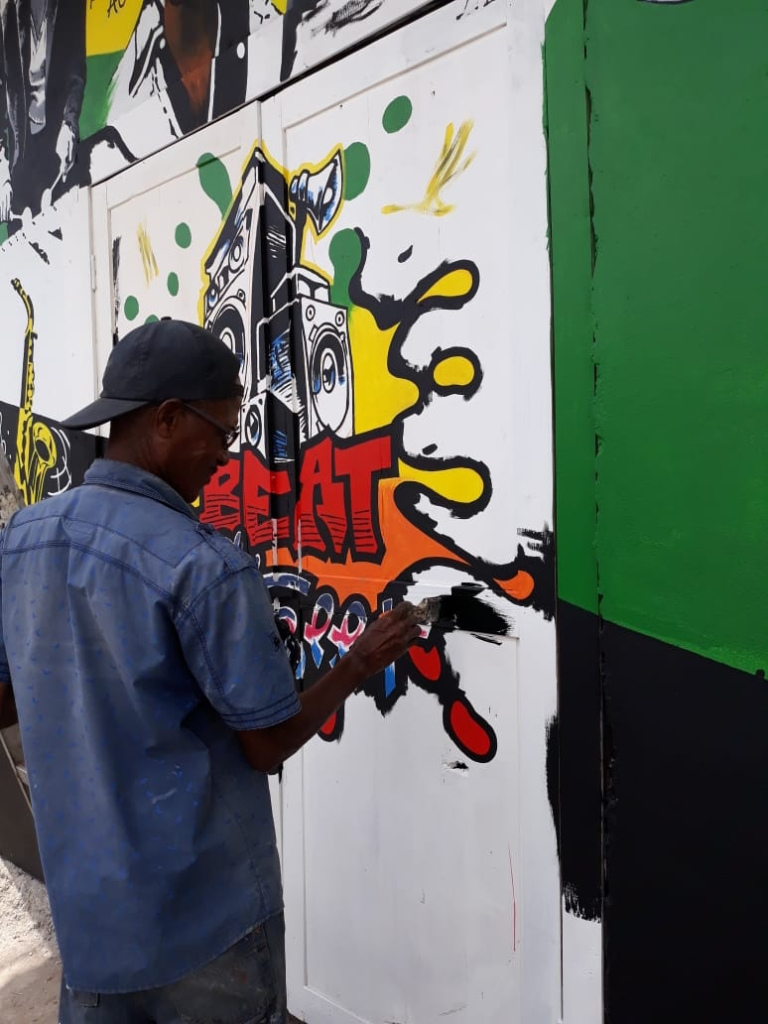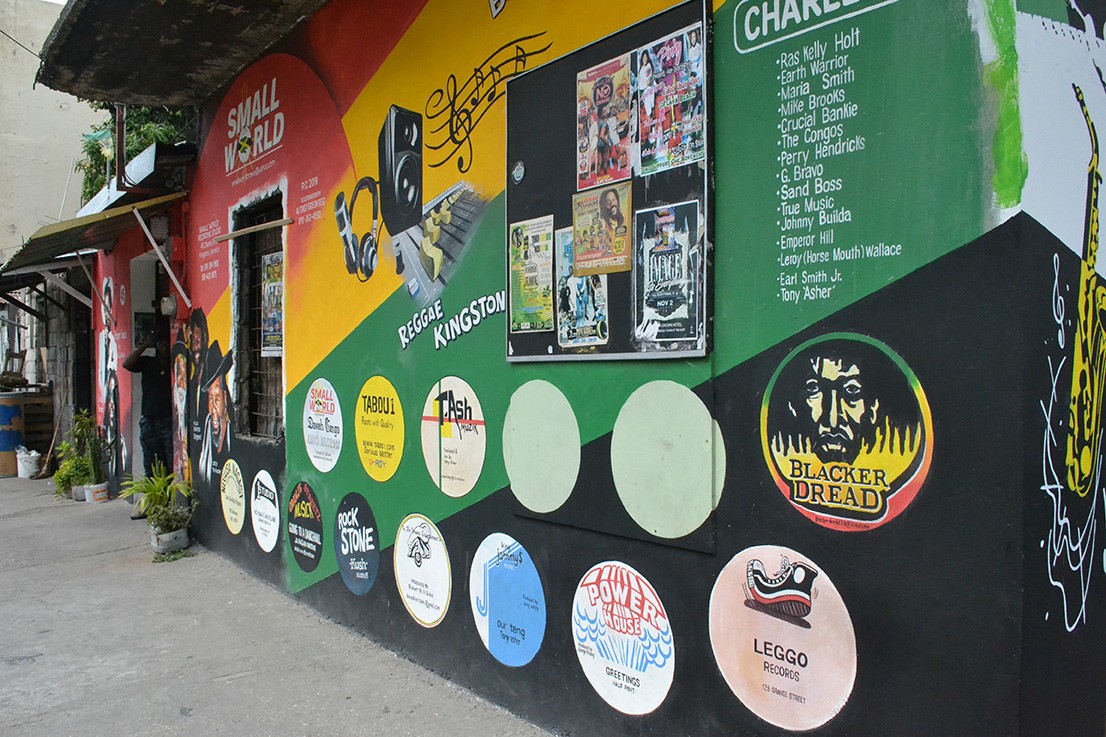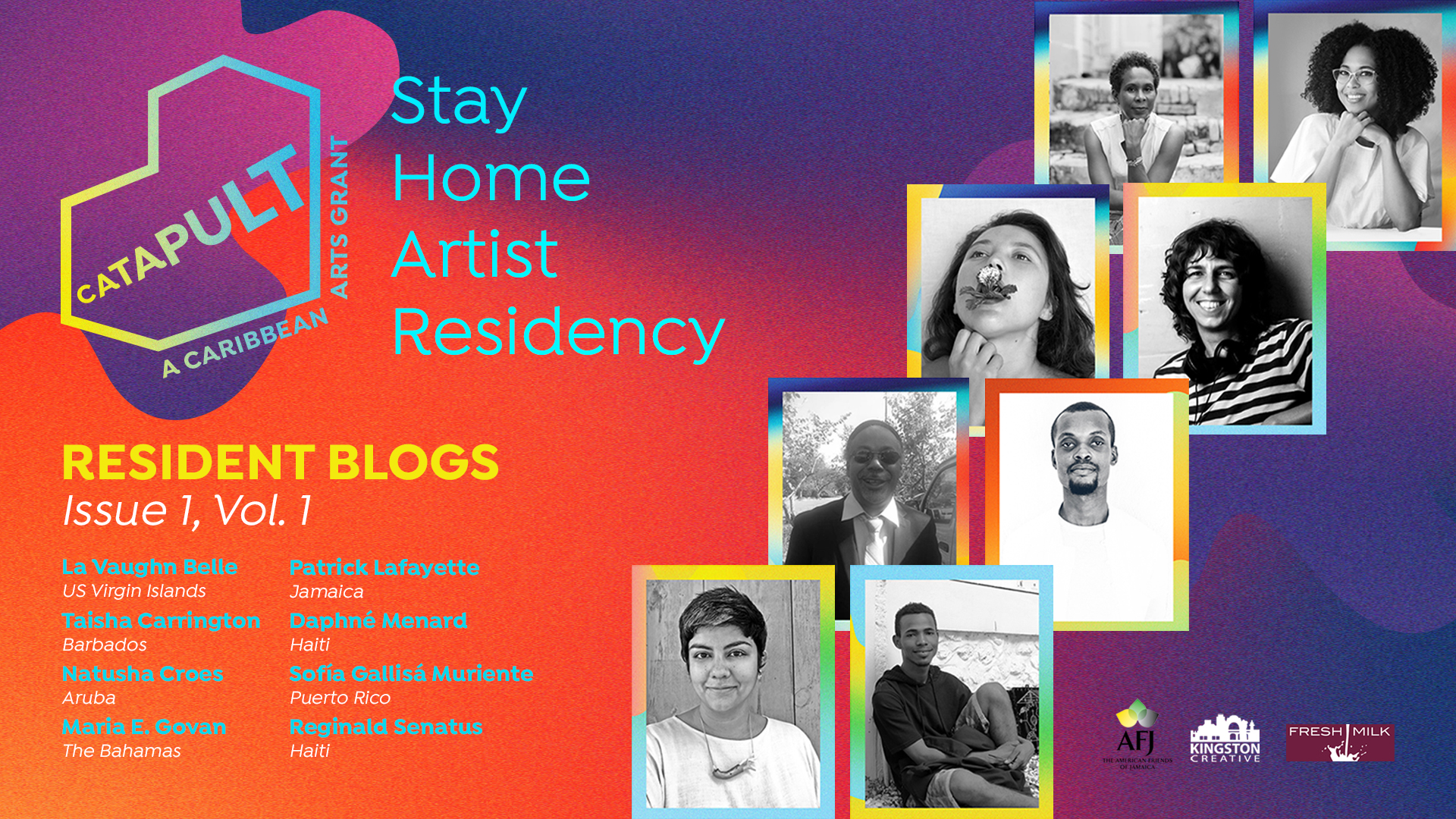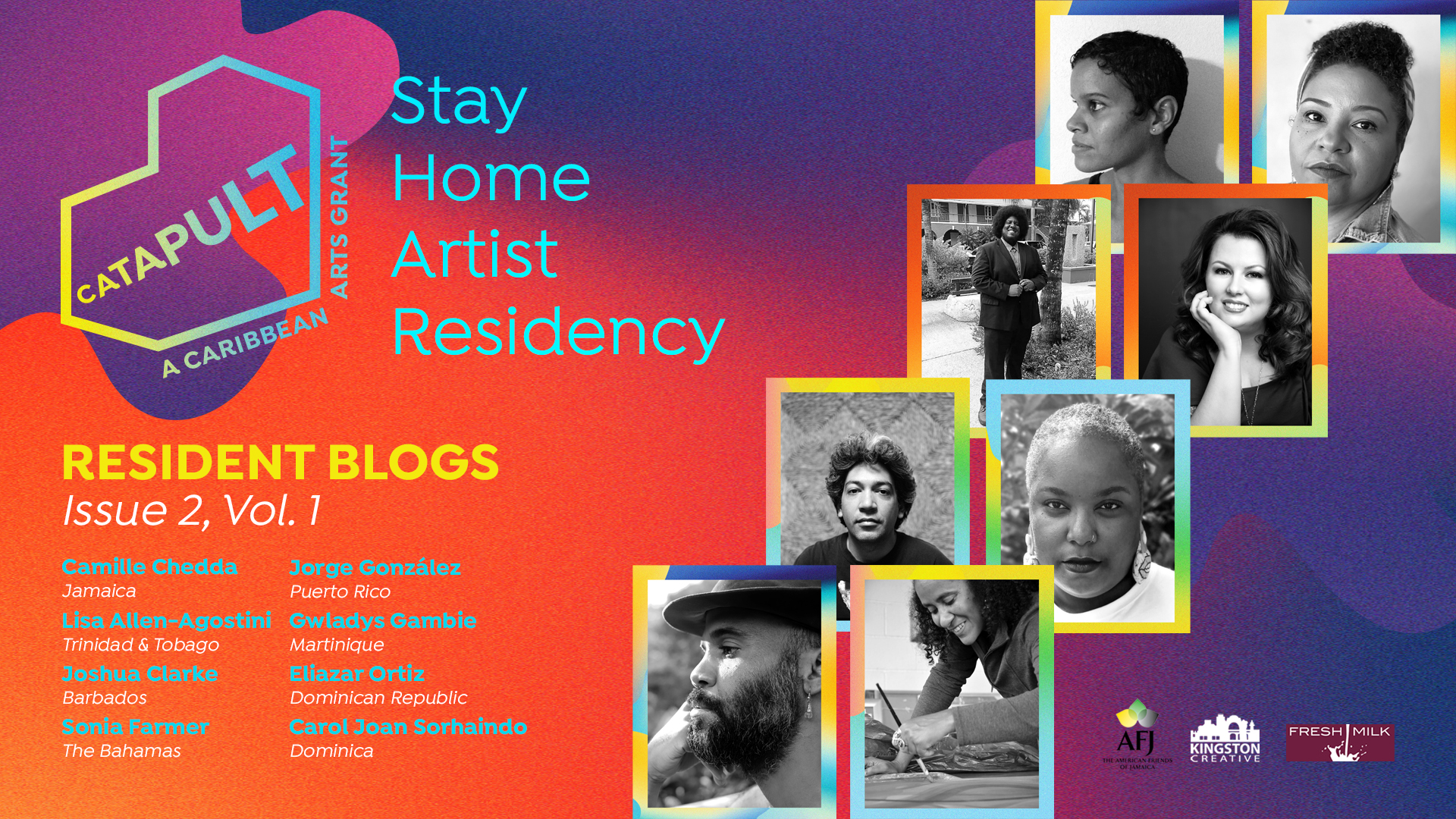Category: Blog_Post
All blog posts
10 Cool Createch Companies to Watch
10 Cool Createch Companies to Watch
Cofounder & Executive Director Kingston Creative
The Biztech Summit & Knowledge Forum will be held from November 17-19, 2020 in Kingston Jamaica, and for the first time, the Jamaica Computer Society will partner with arts non-profit Kingston Creative to take a look at Technology and the Cultural and Creative Industries. Kingston Creative recently opened the first Creative Hub in partnership with the Hub Coworking, with a podcast studio, offices meeting rooms, training and equipment for creative entrepreneurs and content creators. What happens at the intersection of creativity and technology? Well, some pretty cool stuff. Creativity and Technology were historically viewed as separate industries, but today, technology is seen as an enabler of all industries. New tech like blockchain, AI, AR and VR is being applied to creative niches like music, film, fashion, heritage and culinary arts, and as a result we see new ways of distributing content, delivering immersive experiences, engaging remote audiences and even conducting virtual tours. This trend has been accelerated by the pandemic, and Jamaican creatives and innovators are bringing together technology and the creative industries with some transformative results, giving audiences a variety of ways to access creative goods and consume cultural experiences. Creative entrepreneurs are not only using digital marketing and ecommerce platforms to sell goods, they are integrating technology at the heart of how they make creativity, art and culture work. Here are ten Jamaican ‘Createch’ enterprises to watch: PlayJamaica is best described as a think tank that is responsible for providing innovative solutions for several private and public sector companies. Headed by Gregory Moore, they are the owners of VRX(Virtual Reality Jamaica). They are founders of (JEI) Jamaica E-sports Initiative, a recognized member of the Jamaica Olympic Association with the responsibility for the development of E-sports in Jamaica. Their services include Augmented Reality, Interactive Signage, VR/360 Photography, VR Tours and Advertising, VR Games, Video Games, Motion Simulator, Immersive Education, VR Course Delivery, Interactive lab Creation and the team is now focused on solving a major problem in the entertainment sector with the new virtual event platform EventVio. Educatours JA is an EdTech and adventure tour company that integrates cultural experiences with gamification, storytelling and technology to enhance tours and learning. Headed by Kadeem Petgrave and Simier Lansend, the company provides schools, cultural companies, corporates and other groups with experiential learning, team building exercises, heritage tours and adventure tours delivered through an engaging gaming platform. They have even developed and tested a gamified tour of Downtown Kingston’s emerging Art District. ListenMi Caribbean is an award-winning Animation and Design Studio for culturally-inspired products. Led by Kenia Mattis, ListenMi makes animations, apps and games and help brands attract their tribe through amazing storytelling and brilliant design. They describe themselves as artists at heart, and use technology and creativity to excite our audiences and inspire young creatives through summer camps, workshops and products aimed at youth. They specialize in illustration, animation pre-production and short 2D and 3D stories, and produce and arrange film scores, soundscapes, radio ads and record voiceovers. ListenMi is a fresh new voice in the Createch space, and they are committed to strengthening the creative community, while solving real problems by design. Night Vision Media Ltd. specializes in creativity. Founded by Kevin Jackson, they evolved from being a graphic design firm into a company that can provide creative solutions for a range of clients. Currently their services span Animation, Education and Marketing. Their client list includes the Ministry of Justice, Ministry of Labour, Jamaica Environment Trust, Real Estate Board among others. Night Vision has won awards for their animated proof of concept, Abeeku and the Maroons. Best Animation, Best Script and Best Acting at the 2018 Lignum Vitae Film Festival; Best Animation at the GATFFEST Film Festival and Best Animated Short at the Columbu Black Film Festival in Ohio. The company aims to be the leading animation studio in the Caribbean, developing entertaining and educational content for global consumption by the end of 2022. KiannePatrice photo.art.design is a business that focuses on digital art, photography and wall art creation, including creating large format murals for interiors. Design pieces are printed primarily on archival canvas and other options include archival paper, aluminum and acrylic while the murals are digital art printed on adhesive vinyl. Led by artist and female founder Kianne Patrice, the style is contemporary, abstract art and these pieces are sometimes merged with photography to create a fresh, modern and synergistic blend. In the last few years, Augmented Reality technology is used to bring selected artwork and outdoor murals to life. The company’s work is featured on VOGUE Italia’s PhotoVogue, in German photography magazine Pictures Das Foto-Magazin and has been included in several exhibitions including at the BBA Gallery in Berlin and their large format wall art murals adorning walls of private collectors in New York. SpriteWrench Studios is a micro-studio that focuses on smaller, self-contained titles with an emphasis on a great story. Led by Glen Henry, the studio was selected as one of 2020s #BHMGames100. With over eight years in experience in software development & project management, they also offer consultancy services in Illustration & Graphic Design, HTML5 & Javascript Development, Game Design, Project Management. They create a range of initiatives and events designed to increase the visibility and representation of People of Colour in the video games industry. Founded in 2013, the organization primarily serves to advocate for the emerging local game development sector, by providing education, sharing of experience and network opportunities. This studio is looking to explore, educate and advocate for the craft of interactive entertainment in Jamaica, and the wider Caribbean. The studio is particularly interested in exploring the ways the Caribbean’s cultural position can influence the stories they tell. Liquid Light Digital is an award-winning film, video, computer animation and special effects production house based in Kingston, Jamaica. Since its inception in 2002, Liquid Light has completed over 500 projects for independent clients, advertising agencies and production companies comprising an international clientele extending as far abroad as Scotland, India and Brunei. The LLD team, led by Adrian Lopez, has over 30 years of experience in directing, graphic design, visual effects and animation, and has gained a reputation for being the premiere source for the development of high-impact and specialized audio/visual content and programming for broadcast in the Caribbean and its diaspora. From concept development to overall project strategy, Liquid Light Digital fuses creative video direction, bold visual styles and the latest techniques in digital imagery and visualization to achieve our client’s objectives. Liquid Light Digital believes in the synergy derived from the collaboration of creative minds from diverse artistic disciplines. To this end, LLD has fostered working relationships with graphic designers, musicians, CG artists and filmmakers in the Caribbean, Scotland, UK and North America. These diverse talents can be brought to bear as needed — ensuring a world-class, unified solution and a unique end product. First in Line / First STREAM specialise in live streaming and online video platforms. The company led by Michael Campbell and Mark Tracey originally started out as an electronic payment services company that provided secure, digital payment solutions for the entertainment/creative industry for over nine years. They facilitated the safe collection and transfer of millions of dollars in proceeds for events and festivals. Over 33,000 individuals have trusted and used their e-payment platform to make contributions or access events and services from the comfort of their homes or while on the go using their mobile devices. First STREAM now offers a new Live Streaming Platform, an Online Video Platform, an Online Client Dashboard and simple, secure checkout to ensure that creatives can monetise their virtual events. First in Line JA was also the winner of the ‘Greatness in the Making Award’ – Branson & Guinness Made of More Entrepreneurship Challenge 2017. Phase Three Productions is a leading television and multi-media production company that specializes in multi-camera coverage of cultural, festival and entertainment events in 4K & High Definition format, as well as LIVE streaming and other support services such as set-up of LED Screens at events. Phase Three invests heavily in cutting-edge technologies in order to be globally competitive. Led by CEO Delano Forbes, they invest in training and keeping their staff abreast of new communication technologies. This 30+ years old Jamaican company is committed to the growth and development of the media and creative industries in this island and the wider Caribbean. Kraasimages, led by female founder Staysean Daley, is an online platform for Caribbean crowd-sourced stock photos, vectors and illustrations. Responding to the global cry for representation and inclusion, this local company gives photographers and illustrators a platform earn by licensing their stock content to businesses and individuals around the world for use in a wide variety of projects. Today, they continue to be the key destination for creative business professionals who want to make a big impact through relatable Caribbean content without breaking the bank. Imagery has the power to move the world and their photographers and illustrators are ready to shape the narrative for Caribbean content. Kraasimages is proud to offer authentic and relatable Caribbean stock images to the world.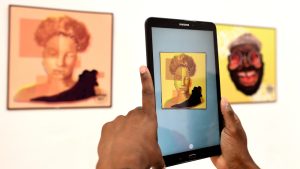
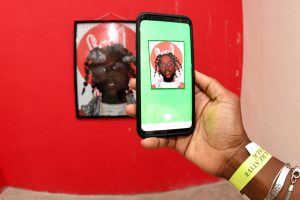
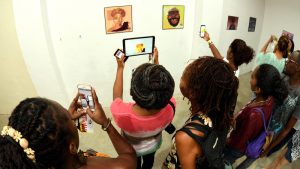
31 & Dog Days, A-dZiko Simba
31 & Dog Days, A-dZiko Simba
On the last Sunday in June Kingston Creative sponsored my facilitation of an online short story writing workshop as one of their initiatives to keep the arts and artists alive in these surreal times.
And so it was that 7 writers Zoomed into participate in ‘The Good, The Bad and The Kingston’, workshop where using the wonderfully provocative photographs of Donnette Ingrid Zacca, one of Jamaica’s most prominent photographers, we dived into the art and craft of story creation.
The images provided characters and settings and writers fabricated from these, backstories and plots. Over four hours, they produced some compelling work full of the contradictions that are a part of everyday life in our capital city.
My overall aim was to help improve the competencies and confidence of writers by guiding them through a process that was fun, interactive and cooperative. Mission accomplished, I believe. All participants created memorable characters with interesting stories, one of which was clearly morphing into a screen play for a short movie.
Here are two of the stories that were brought to completion after the workshop:
‘31’ – a story by Marleigh Jones, a gritty tale of the life of a young blood just a light scratch below downtown’s surface – his aspirations and pressures juxtaposed against his mother’s dreams.
The second story, written by Holden Hudson, ‘Dog Days’, with its hero, a canine philosopher, explores the opposing pulls of uptown and downtown living.
I am grateful for the support of Kingston Creative in sponsoring the workshop, to all of the participants who showed up with open minds and hearts and especially to Donnette Ingrid Zacca for generously sharing her art.
31 By Marleigh Jones
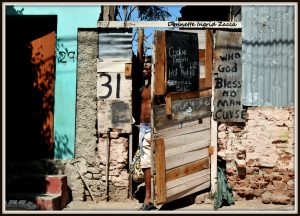
12:00 noon. He rushes from the yard; Mama’s complaint about no shirt fading fast. Dadda needs the glock.
As he flies along the sidewalk, john crows circle elegantly above his head, gliding in the high Kingston breeze that ignores his sinewy frame awash with sweat from the punishing sun.
“Bad man cum firs’.
‘Im doan wait.
‘Im nuh axx nuhbaddi.
Ah im fly di gate…”
He laughs at NikiNax’s song, blaring from a route taxi soliciting passengers, as he remembers being first to ram the girl at initiation.
“Eh bwoy, watch weh y’ah –“
A bus conductor, dangling from a speeding 30-seater, boxes his head as he crosses Orange Street
to the shell of Captain’s Bakery. His fingers move reflexively. They caress the steely hardness of Bad Gyal. Just as quickly, he withdraws, muttering,
“Every puss have him 4 o’clock.”
He marks the escapee and makes note: Rock River to Kingston via Annotto Bay.
In his bag, Bad Gyal anchors layers of baby pampers, and a pair of sneakers. This is topped off by a nice piece of yellow yam from ’31’.
12:10. He sees Brown Man’s cart and thinks he will buy onion, skellion and thyme on the way backto ’31’ for Mama’s soup at 4:00.
Read More ’31’ a story by Marleigh Jones
Dog Days by Holden Hudson
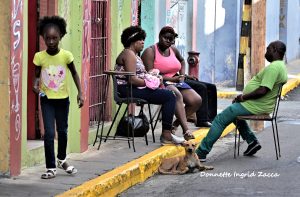
The intoxicating aroma of a stale stout brew vapors from the warm pavement and mixes with marijuana and pan chicken before dancing a ballet of twirls in the air above the street. The aromatics in the air pacify the muscles as the warm breeze of the golden hour relaxes the load for the upcoming night. Plumes of dust balloons from the dry patches at the end of the street like funeral pyres that offer incense to the gods – if they are there. The calm relinquishes to the defeat of a harsh reality that lives in the dangerous fragility of night. This painful tension can often be broken by a cold reality that stabs smoothly through warm belly meat, oozing life-giving juices and straight to the cracking stop of hard white bone. David the dog knew this. David saw it. He tasted it. On occasion he lapped the life substance from the dusty floor of the city streets. Life’s juices often caked his tongue and colored his whiskers brightly betraying what he is really- a dog on the mean streets.
The shrieks of an irreverent small human pierced through David’s abated consciousness like the maddening siren of the Babylonian agents. David sprung to all fours with vengeful disapproval and grappling alarm. There, wrapped in a bosom of love, a small human that instantly melted his heart. The folds of the blanket come undone with a fervent yawn and stretch just enough that he could make out a face of innocence with a nose as cute as a button. The grimacing snarl he had formed with fright dissipated from his face as the growl of annoyance was swallowed into a glottal knot that balled in his throat to be of use in future angry times.
The ‘hoomans’ that looked out for him were decent people. Every morning there was cornmeal cooked with cuttings from the previous night’s dinner. This happened without fail. They knew he worked nights and as such rewarded him with a payment breakfast every morning. Even when the day was one that didn’t see any kitchen activity, there was always a party with a line of pan chicken men with scraps on offer most nights of the week. David always went early so he could get back on duty at home.
Now awakened to be put on guard, he scampered to the shop at the end of the street. Through the misty window he saw a television commercial offering something of a dream.
“Uptown Puppy Chow”, he muttered cynically.
“Perfect k9.”
“Have a shiny coat. Even yet, can see vets in white coats.”
‘’Anyways………..never liked those vets in their white coats. They look too much like butchers to me!’’
David knew in his heart he was a little envious. If he was cut in two at the time, his guts would be green with envy.
“Maybe a bad mind me ketch …..” his thoughts rebounded.
“But a bed inside would be nice”, he thought.
“I deserve it.”
“I deserve nice things.”
“Isn’t it the dream of everyone to get out and have a big house on the hill?”
“Nothing no really wrong with that. I want to travel too yah man,” he said, trying to convince himself.
The yearning of flight returned nine nights later like a slap in the face from the cold hand of death in the balmy night. On that day the pups around the way ran out on the main road before they should have and had a problem with the wheels of a deportee taxi. Or so they would like us to believe. David heard the rumors about the deportee taxis and the pups before. He knew what happened even if no one dared to say it. The system used the vulnerability of the deportee taxi against its own dogs is what really happened. The unofficial word was that one misdirected juvenile bark in the wrong direction and you would be greased then found in nearby bushes. The official word did not mention, holes where eyes once sat eyes, the rat-ta-ta-tat echoing through the darkness nor the whimpering nudges of mothers trying to resuscitate. It’s sad that no one asked why dogs barked. The pups were all guilty by association. They lived in the wrong part of the town. Expendable! “All dogs matter”, David muttered with a conscious inside voice, knowing some ears are more discerning than others.
This dis-ease will not go without recompense. From New Grill to Pork Land, there will be no safe route. The dogs won’t be disrespected. The nervous existence of the deportee taxis is evident in their frantic driving and all dogs are in danger. Even the parking lots where once birthed the deportees, have refused them reentry. Try as they may to make a new life, trouble finds them. A quiet word with dogs would have informed taxis of a safe route, but that didn’t happen. Now being punctured is inevitable.
Somewhere in the heat of the tenth day with the reeking of despair in the air, David resigned concretely that leaving is best. Pushing him to the edge was the sight of the red-hot midday sun mercilessly baking the bodies, allowing the afterlife to envelope gases before contorting flesh and bone. It could have been the sight of vultures, perfumed in the stench of death, swirling and swooping like a black mass that dishonored in life and in death while blotting out the sun to create shadowy dancing omens on the dusty ground.
If he ever wanted to make his move, Jetset was the dog to know. Word on the street was that Jetset knew how to get on the work program and that’s where he went when he was not around. Some saw Jetset as a metropolitan dog of mystery and intrigue. He would disappear for months on end before reemerging in some slightly wiser and some slightly damaged way as well but always with stories to tell. He would regale the pups with stories of sleeping in luxurious rooms, being at pool parties and eating fine gourmet food bought for him and Bella in special cans. He was always talking about having a ‘Bella Blue’ while pausing to look off longingly to the side. He spoke of Bella Blue like a favorite experience more than a K9.
The chat with his brethren went by in a swift businesslike manner. All the details were covered expeditiously. He needed to know the basics of when and where. He should always keep his program card on his person. He had to arrive at a specific place and at a specific time. He should not ask too many questions. He should act natural. He should expect food and a leash. He should not eat too much. An upset stomach while travelling uphill and at altitude is a real bad thing. He should try to relax when his ears start popping at departure and arrival- chewing gum would help. This is normal. If his stomach got upset, he should have a crème soda. A hot one. He will be taken to a vet, but he should not worry unless a white lubricated glove is introduced. He will not be in quarantine, after all the virus doesn’t affect dogs, only cats. This is why no cats were allowed on the program. David paid his three bone program fee, signed his paw print and left Jetset to finish his paperwork. He was leaving for better. He was old enough to know life is short. He had to try, he told himself, he will not be a statistic. He had already paid the fee. It was not just expensive, but it was all he had buried. He had to get out.
Upon arriving, excitement was palpable as David was able to see the whole of Kingston. The lawns were manicured as he thought. The garden was fragrant in bloom. The pool at the back was the perfect temperature and color as it mirrored the mountains set against it. This was pleasant, he thought. David’s eyes opened widely and he realized everything that was as his dream- just like the “Uptown Chows commercial.” The family were decent people– all but one. Back rubs and head scratches as they passed by were an everyday occurrence. He had acted naturally, he didn’t ask too many questions. He followed what Jetset had said and now he was where he wanted to be. He was content, especially since had company. In the car with him uphill to the house was another dreamer who had won the lottery.
In very little time, David realized this mutt was dangerous. Not violent-dangerous, but a kind of manipulative evil that was no good anywhere. He learned to bark with a foreign accent that disturbed the family and made them think they had made the wrong choice. The bark was something that mimicked a Chihuahua and mosquito having a quarrel through a vuvuzela. He walked with a flair, pointy-tailed with erect ears and separated himself from his K9 companion. David was not sure how to put his feelings into words but it caused him great angst. When Mutt heard the family discussing new names, he said something about no longer being a mongrel; but should now be considered being a Royal Jamaican Terrier. David never understood what those words meant but he could always sniff out hypocrisy and pretentiousness, just like all the other dogs from the street. It is an essential skill where he was from. It was a waiting game. No dog can be a hypocrite forever.
The first test of faith came when Mutt told a lie. Mutt could not control his urges and chewed on a Jimmy Choo shoe. They were red-soled and expensive enough to sell three generations of Rottweilers from the security company into servitude for reparations. Mutt forced his hypocrite head into David’s direction even while the red leather needed to be flossed from his incriminating mouth. Every pulsating nerve boiled and a growl from the pit of hell developed in David’s loins. It had a fury to turn Mutt into a rag doll with the stench of death. He only needed a blink in David’s direction to be dismembered. The anger inside broiled in David’s belly but resisted acting.
With his thoughts occupied with anger, David hadn’t seen the undercurrent of Mutts actions. Mutt in an action of incognito fueled maliciousness, and cold dog-hearted deception retreated his hind legs behind the giant couch before contorting his demonic figure to follow behind like a slippery slithering evil toward the location of the dog beds. He had a plan. He had a way to execute his plan. He used the tip of the young master’s shoe lace to frantically floss the guilt-revealing leather from his teeth onto David’s bedding area. While David’s back was turned, Mutt released the most deliberate conniving and mournful whimper that dragged the Masters attention over towards him. The master’s heavy footsteps approached Mutt’s puppy dog eyes that seem to speak volumes in the Master’s mind. David imagined seeing the gears clockwork in his Caretakers brain which then unleashed his anger towards David. On turning the corner of the couch, the scene showed the leather of the expensive shoe all over David’s bed. The Caretaker thought now that David must be a shoe chewer and subsequently Mutt must apparently be a smart dog that is suited for domestic life in the program. This was how lies became reality and falsehood brought bone crushing consequences. This is how many pups are found in Rivertown dump.
Fuming, the Caretaker took three dashing steps toward David. In a deliberate motion, he curved his big right hand under David’s belly and rotated his shoulder rapidly. David remembered the shock of the impact as a heavy heat descended and knocked all the air from his belly through his funneled nostrils. David’s body went limp and nervous as his four feet left a firm stance into a seemingly slow smooth and excruciating maneuver much like the space walk. The visuals from the alarmed children and Kingston’s vista through the glass wall rotated as time slowed just long enough for him to know he had been inflicted a blow of a lifetime and there was nothing he could do about it. He was in a defenseless flight that crashed him into a steel reinforced concrete column on the far side of the living room. He felt his body slap and stick slightly to the flat side of the column with his head askew enough for the column’s sharp edge to feel like he had a razor blade stuck in his throat. Acidic brownish- green and yellow bile burned his stomach lining and came through nostrils and grimaced teeth as a warm red fluid soaked his fur and lined its way down to the marble tiled floor some six feet below him where he gradually slid. He heard his body break like dry twigs, gripped in strong hands; bundled and snapped over an unforgiving knee and felt the stampede of a thousand horses galloping on his mortality. David’s body went limp as the world said goodnight with a blurry kaleidoscope of his utopian dream.
Now exiled to the outside. It was the responsibility of the children to take care of him now even as Mutt lounged spitefully close to David’s full view – right under the air condition unit. He would often jeer David while he was on his recovery walks and stick his tongue out to mimic David’s demise on that awful day. Swallowed rage was a close companion to David.]
Gradually David tried to regain his strength. He chewed blades of grass and the children brought stolen caffenol and added it to his water accompanied by his ration of Uptown Chows. Slowly his stomach settled and his body healed. Eventually he could run the yard especially when the children came home from school. No sooner had the children changed from uniforms, they were both outside with David, playing. It could be on the swing, under the mango tree or lounging by the pool with their tablets. More often than not, to David’s amusement, the children’s Instagram feeds would take them to watching videos with dogs. They even subscribed to the page ‘The Dogs of Kingston’. David would often watch with earnest to see if any of his compatriots were captured along the avenue. He realized that since he’d left, there was an uptick in the war with the insurgent deportee taxis. Many of the dogs had been crushed and many deportees were punctured as a result. There was a true need for ghetto guard dogs, his people needed him. David considered making his way back, after all his life now was comparably worse now that it was before he left home. His former Caretaker had never laid a finger on him. The children loved David but their parents had a preference for Mutt. David was however not worried about this. He had known of many ‘chewers’ and knew it was only a matter of time before he bit off something that he could not chew in the house. He also knew that the Caretaker would regret the day he laid hands on him- that was for sure. Mutt would feel it for sure for framing him also.
It was early one Monday morning when David witnessed the usual efficient buzz through the glass windows from the outside. Homework was being stuffed in bags, and aromatic steam rose from the stove where bacon and eggs were visible. The panels of the doors opened, and an eager child was seen trying to deliver David’s breakfast when suddenly a blood curdling shrill pierced through the air. The blood drained from the child’s face as she dropped the puppy chows and water and joined the family members in a hurried stampede up the stairs before quickly retreating downstairs with clenched noses and nausea imprinted on their appearance. Mutt’s addiction got the better of him! He had not only chewed on the other foot of the Caretakers wife’s shoes but also swallowed her wedding ring and then deposited his bowel movements in the Caretakers all leather executive loafers that he prepared for his board meeting that morning. The lividity on the man’s face was palpable and seemed to change the color of the clouds as he dragged a now bloody Mutt from the house by the throat. Mutt’s was so captivated by fear of his own life, he sullied himself and that was then mixed with bloody regurgitated fluids. After throwing Mutt to the fences, the man of the house was returning to the house when he paused and looked at David with a regret so heavy it transformed his big, strong muscular frame to an embarrassed worm hiding in a cocoon. Clearly he realized that David was never to be blamed in the first place. He should have never hurt David in the first place. He was too quick to anger.
David could not help himself. He laughed so hard his belly shook with a jolly enrichment. Tears came to his eyes as his laughter showed a full mouth of teeth with his joy echoing across the neighborhood. His front paws slapped his tummy as he fell backwards in a fit of unrepentant elation. David’s caretaker was so embarrassed he returned to his house and family with his head hung low. He had to retrace the putrefied steps he made to exile Mutt to the outside.
David realized that he could easily tear this mongrel apart without impunity. He saw this dejected mongrel looking all decrepit and lost in the world. Sinking his teeth in the soft underbelly of whimpering abject fear would be far too easy.
Mutt, now rejected by the dismissive family, tried to cultivate affinity with David but to no avail. “Bredda me couldn’t help me self! Me see plastic or rubber and can’t help but fi bite it up. Is an addiction me have, me swear! It’s a disease. And me never get the help when me ask for it.”
“Shut you mouth bout disease, dog mek fi bite but you nasty! How you fi doo-doo in the man shoes,” David retorted. “A soon pap you neck!” David became so enraged he sprang at Mutts jugular. Mutt had to jump away with all his strength. David only managed to rip the collar from around Mutt’s neck to which Mutt had attached his program card. On the back was a message David had not read before.
IMPORTANT
ANY DOG WANTING REPATRIATION AT ANYTIME SHOULD HOWL THE PROGRAM DOGFATHER AT THE NUMBER BELOW, AND A MOBILE K9 CREW WILL COME TO YOUR AID.
USE HOWLING CODE: 1-888- DOGFATHER
A waft of excitement sprang to David’s weary legs. The following day, brought a buzz from upstairs with attention given to brewed coffee in tall cups, high heels and oxford knotted ties. David tried to communicate his gratitude and his impending decision to be repatriated to the children. He spun in circles and ran back and forth the full length glass wall that overlooked the waterfront of the city. He was rewarded with pats on the head and comments of being a nice dog to his frustration. David asked Mutt for his shift as this would be his last gesture for the kindness he was shown by the children. Mutt was more than happy to oblige and spent the day lounging by the pool but was tormented by his exclusion from David’s plans.
In the cool of the evening, a full moon concaved itself from the east to west. The family was at dinner as he began howling his goodbyes and calling for repatriation in one sonic euphony. They will remember me David realized as they stopped eating to applaud and mimic his tone. This put his heart at ease and gave him impetus to continue howling the code 1-888- DOGFATHER. It did not take long for the other K9 to resonate the code from one house to the next, further and further downhill to the ears of Jetset- The Dogfather. The brotherhood of the K9 was down but not out! Upon receiving the message an alpha team was assembled and sonar positioning established to mount a rescue mission.
With as much fervor as it was received, the message came back up the hill with a directness that comforted and excited all at the same time. David read the message loud and clear as he sat waiting in the cool of the blue night. “No seh nuttin mo’ me dawg! We a farwud fi you, no delay! Tan up right whe you deh seen, nuh move! You no haffie show no ID cyaad dawg, we know you a who, you hear dat! Everybody cyaan wait fi see you dawg! You a reel general from longer time, no feel no way, you a wi bredda, a love we seh straight, hear dat! Real know real! Yah!”
David’s heart was put at ease. His thought turned to the new babies in the homes of his caretakers. He thought of the hope they represented to their parents and to the world. He now knew he was doing his part in providing hope. The cavalry is on its way for the triumphant exit. He had to return to the bosom of love.
Dog Days © Holden Hudson 2020
A Day in the Life of a Creative Entrepreneur, Tahelia Taylor
A Day in the Life of a Creative Entrepreneur.
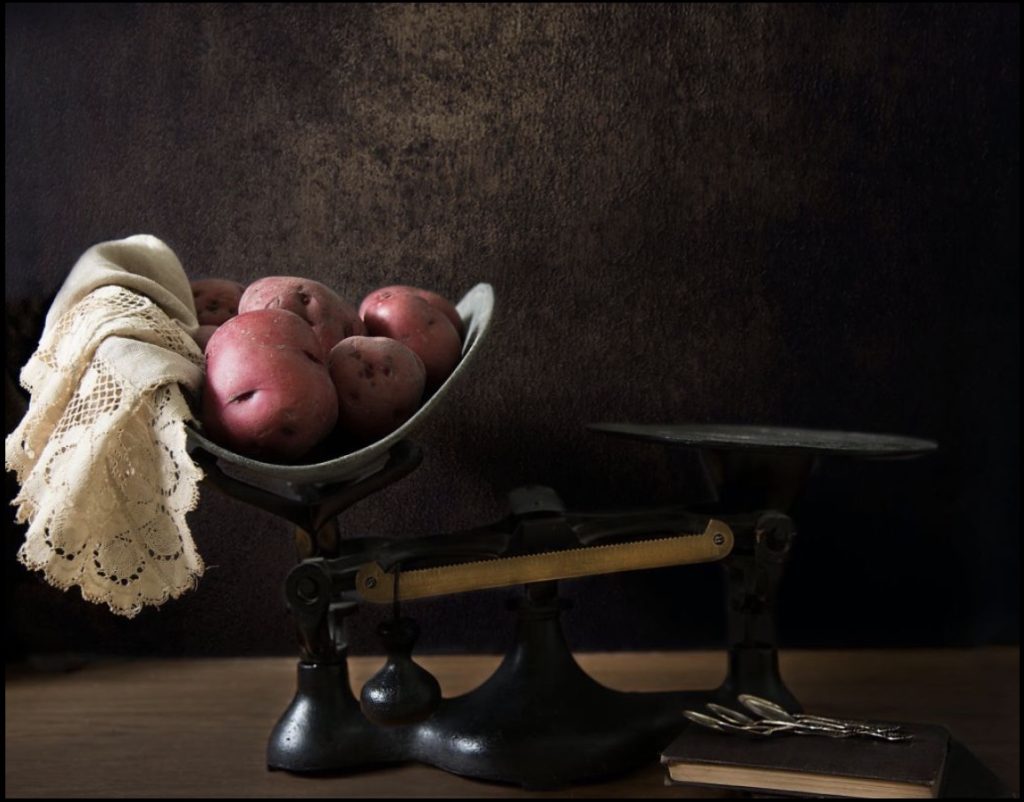
Grounding
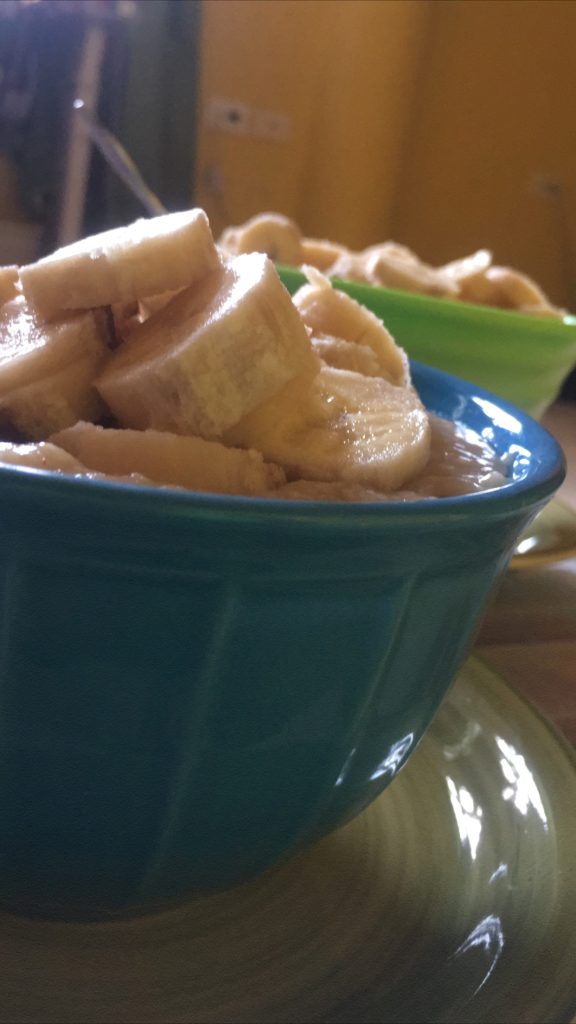
Time Blocks
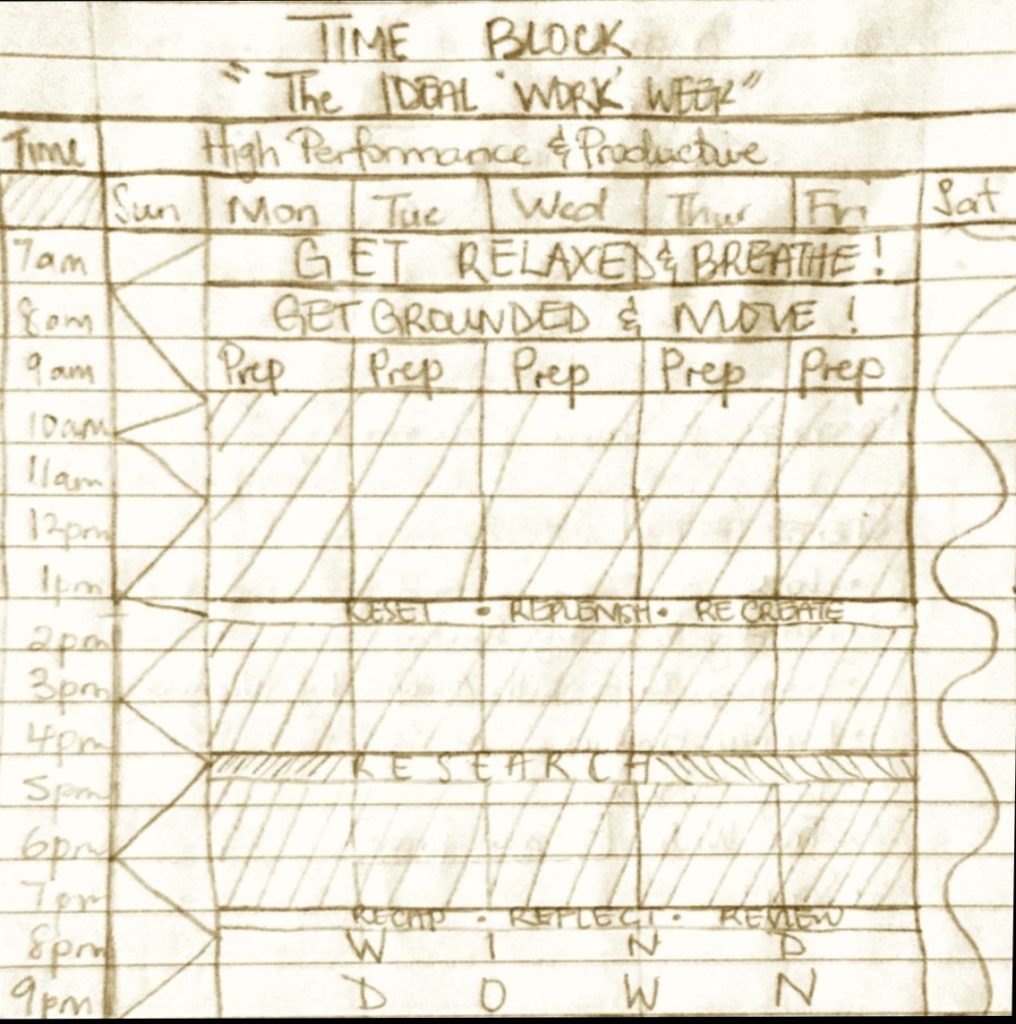
Wind Down
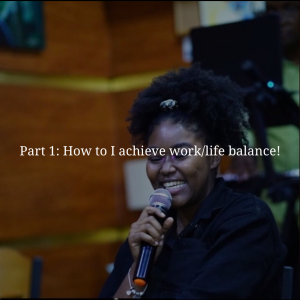
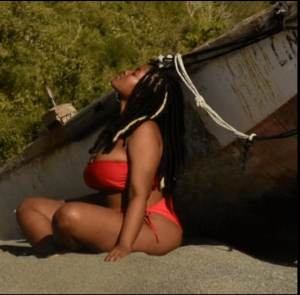

•journal reflection of the day with gratitude
• jot down tomorrow’s MVPs
•ask a Dream Question (a question that I would like my dreams to answer)
-the days are crazy sometimes but I do ensure to start and end my days with gratitude!
Conclusion To be honest, balance is not easy to maintain but it is possible. My key is knowing who I am, I know I hate to be boxed in by structure but I also can’t be too free and not perform daily tasks that pushed me towards my goals so this flexible structure is perfect for me. It really is all that I need (plus discipline and patience) and if you’re someone like me this definitely will help. I hope these tools and my experience assist you in finding that balance you deserve as a Creative Entrepreneur!A Day in the Life of a Jamaican Independent Filmmaker – Danielle Russell
A Day in the Life of a Jamaican Independent Filmmaker – Part 1 (The Journey to becoming a Filmmaker)
“I want a doctor’s kit for my birthday this year,” I told my grandmother, “I want to be a doctor.” It was a few months before my 6th birthday and that was the 1st time I remember planning a future for myself. I did not become a doctor and as I reminisce on my journey towards the actuality of my chosen career path, a few defining moments stand out. Every few years until I was 15 years old, I had a different vision for the career path I would follow. At first I wanted to be a doctor, then a scientist, soon I moved on to architecture. By the time I was 15 years old, the latest decision was to become a veterinarian. My logic was that animals were too cute to suffer and I would be the one to stop that suffering. That summer, I decided to volunteer at the Jamaica Society for the Prevention of Cruelty to Animals (JSPCA). I wanted to do something to occupy the long summer days that lay ahead. On my 1st day as a volunteer, I awoke early and got ready so that my mother could drop me off at JSPCA before work. Before we left, our house phone rang. My mother answered. I heard her have a brief and pleasant sounding conversation with the person on the other end. It was my older cousin. My cousin had spent several years in the USA studying filmmaking and screenwriting and had since retuned to Jamaica. She was a co-creator for a 6-week, mini-dv, introduction to filmmaking workshop, which was also starting that day. She had called to ask if I would want to join the workshop. I weighed my options. I already knew what JSPCA was like, as I had volunteered there during the previous Christmas holiday. On the other hand, I had no idea what filmmakers did, plus 6-weeks seemed like a better bargain for my summer than the 2-weeks I had planned at JSPCA. It was decided. “Ok” I told my mother, “I’ll go to the workshop.” I often credit that instant as the defining moment in my choice to become a filmmaker. However, the more I think about it, the more I realise that my appreciation for film probably began long before. As a pre-schooler, I watched Disney’s Aladdin at the Harbour View drive-in theatre and sang along to A Whole New World, a song which will forever act as the sound track for that period of my life. As a primary school student, I watched VHS cassettes of The Lion King, Love Story, Annie and Thomasina until the tapes wore down. Later on we got cable, and as a teenager, I discovered the Independent Film Channel (IFC), 80s classics from Hollywood and Lars Von Trier. It seemed to me throughout the years, that there was nothing that could evoke a stronger emotion in me than the movies. I could not figure out why a select set of films had such a profound impact on me. I watched them over and over again, crying uncontrollably or feeling a strange attachment to the characters without knowing why. That summer that I attended the filmmaking workshop, I wrote my first screenplay, designed my first prop, learned to edit video and sound, formally studied films and worked on my first film set as the boom operator. Some of the workshop participants who I worked with, still continue to pursue film to this day. The boom and sound equipment were my little piece of the film set that I guarded and which I grew to love. At the end of that summer, I matriculated to 6th form. Besides enjoying a more flexible timetable and getting closer with friends, I made my first short film in order to promote the film club that I started at my high school.
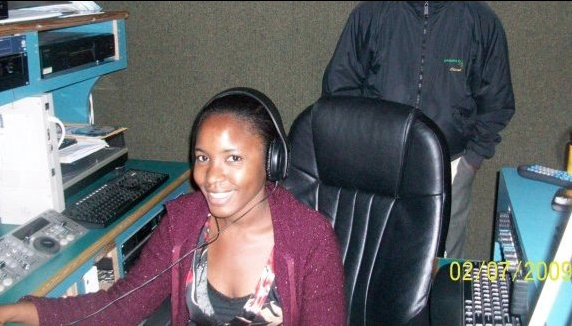
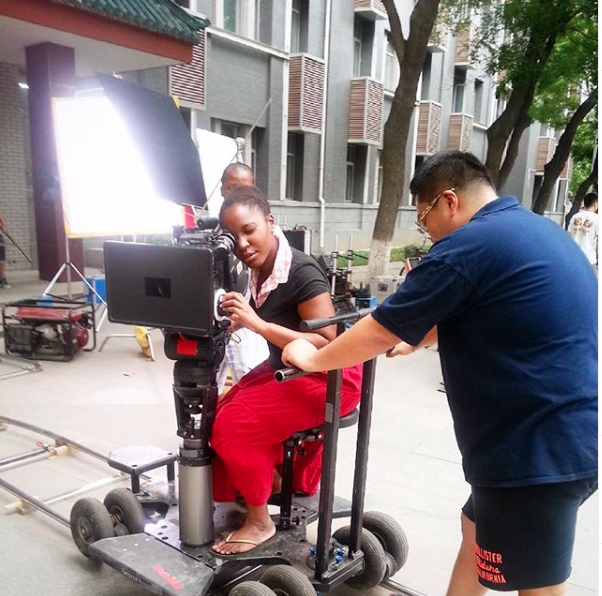
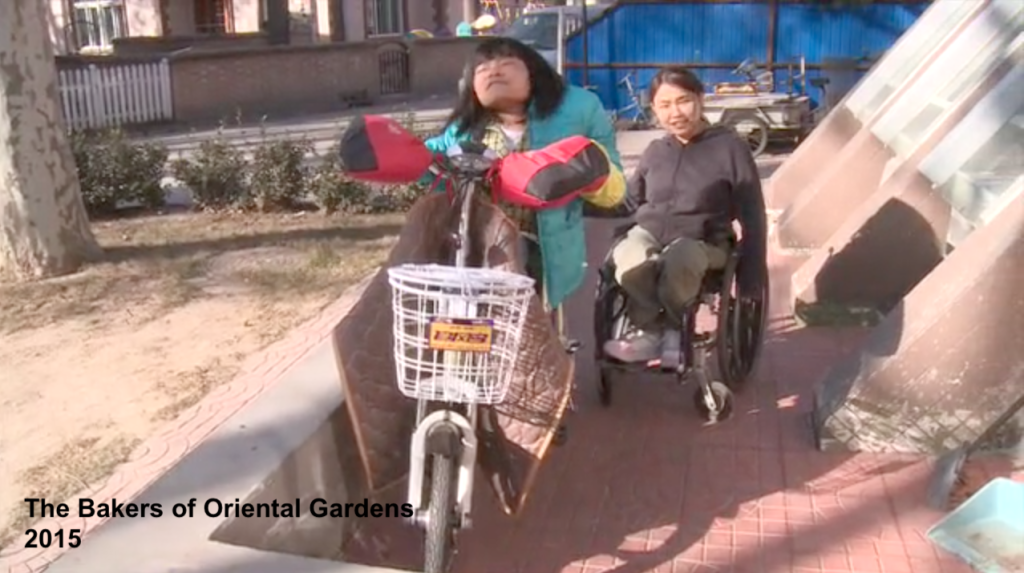
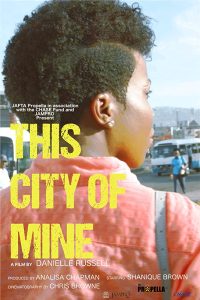
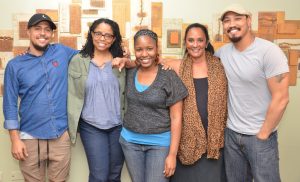
- Everyone’s Path Is Different. Do what works for you and trust the process!
- You Set Your Own Hours. There is no need to have a strict 9 – 5 schedule, unless that is what you want.
- Travel. It allows you to travel all over the world.
- Education. You get to learn about many different topics through the research that is required to write good and interesting stories.
- Impact & Reach. Your film has the ability to create change in people and societies.
- Project Completion. The feeling of accomplishment you feel at the end of a film project.
- Friendships. You constantly meet new people from all over the world.
- Watching Movies. Watching movies is necessary to keep up-to-date and who would not want to watch movies?
- Everyone’s Path Is Different. There is no pre-determined pathway, so determining the steps to take for a successful career can be confusing.
- Production Hours. Shoots can go on for very long periods, 12 – 18 hours at times.
- Funding. Seeking funding for a film can be a taxing process which may require months or years, thereby increasing the time needed to complete one (1) project.
- Uncertainty of income. Depending on how you decide to earn from filmmaking, income can be uncertain. However, having multiple sources of income helps to alleviate this issue.
ARTIFICIAL INTELLIGENCE (AI) AND THE ORANGE ECONOMY

I had the pleasure of meeting the artist Ai-Da late last year. She gave a powerful presentation at the Abu Dhabi Culture Summit, addressed the House of Lords in the UK and hosted her own exhibition of art at the United Nations and the Venice Biennale. Not too shabby for an artist barely four years old. Now, of course, Aida isn’t human, she is the world’s first ultra-realistic robot artist. She speaks articulately, interacts with her audience, draws and paints using camera eyes and her robotic arm – and she is powered by AI algorithms.
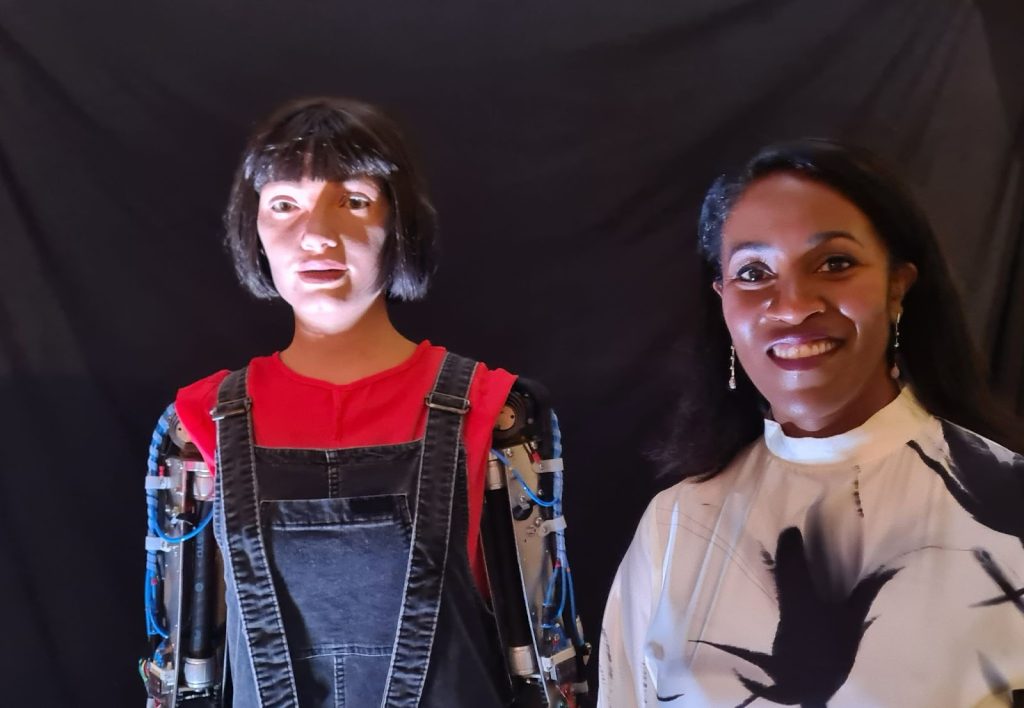
Meeting AiDa at the Abu Dhabi Culture Summit (2022)
The rapid rise of artificial intelligence (AI) will undoubtedly have a lasting impact on nearly every industry, but it is set to impact creatives in the Orange Economy in a big way. The paper “Creative Disruption: The impact of emerging technologies on the creative economy” by McKinsey & Company, outlines the impact of AI. They reported that the Associated Press has used AI to free up around 20% of reporters’ time while increasing output tenfold. An AI-generated Drake and The Weeknd song went viral in April 2023 leading to public calls from musicians for those in power to “regulate it before we’re all finished”. In film, scripts have been written by AI, complete with stage instructions, for a science-fiction movie.
In literature, there are entire books written by AI, novels like ‘1 the Road’ (in the style of Jack Kerouac) and “The Serious: A Proven Divorce” which sounds like something I might actually read! There are complete volumes of AI poetry and perhaps most chilling, “Bob the Robot”, a Children’s book, written using AI. The conversation has moved way beyond ruminations on the pros and cons of Chat GPT, there are now paintings created entirely by AI, and even exhibitions of AI generated art at the 2022 Venice Biennale. What started out as an aid to creators, now is a concerning competitor.

AI Exhibition at Venice Biennale 2022 – AI composite images (not real faces)
In May 2023, the 9th World Summit on Arts and Culture was hosted by the International Federation of Arts Councils and Culture Agencies (IFACCA) in Stockholm, Sweden. The theme was “Safeguarding Artistic Freedom”, so I expected to hear about books being burned or banned. And indeed, it was worrying to hear arts leaders from several countries cite instances of extremism and active repression of artists, including censorship and even imprisonment of artists who challenge political power structures. It may not be happening in the Caribbean, but there is a wave of far-right extremism and nationalism sweeping across the world, even in countries that we once looked to as bastions of democracy. Caribbean nations should remain vigilant and ensure that artists are not discriminated against based on nationality, race, ethnicity, gender, physical ability or prevailing societal norms.
AI and Artistic Freedom
But artistic freedom doesn’t just apply to the freedom to create without censorship or intimidation. According to UNESCO, it also entails the right to have one’s artistic work supported, distributed, and fairly remunerated. Issues of freedom of movement / visa regimes, fair transnational trade and decolonization were discussed, but one of the biggest challenges that emerged at the 2023 Summit on Arts and Culture was the rise of Artificial Intelligence.
AI is not only a short-term threat to jobs and the livelihoods of creatives, but also to the long-term evolution of society at large. If creativity is no longer a uniquely human trait, then what is the future of culture? Digital tools would appear to be a positive aid to artists in creating work and reaching new markets, and on the face of it, technology would seem to be a democratizing factor. However, there are dangers and AI is not a friendly sentient being, trying to help us save time and write our articles faster.
During the conference, the news broke that the ‘godfather’ of AI, Geoffrey Hinton warned the BBC of AI dangers as he resigned his post at Google, saying that he now regretted his work. We were urged to stop personalizing AI and remember that it is a series of algorithms, designed by a handful of Big Tech companies like Google, Apple, Microsoft, Amazon, Meta, IBM, NVIDIA and Open AI. There are ethical concerns around the design of these algorithms, including equal access and the security of our cultural information in a rapidly evolving digital age. A cursory peek behind the curtain at the leadership of these companies hints at who is designing these platforms and should raise serious questions about who they are designing it for.
Global South Perspectives
Despite the concerns, countries of the Global South tend to have a more open and accepting attitude towards AI, as technology allows these developing nations to accelerate development and be able to compete. There is a new crop of young digital creators to watch across the Caribbean making NFT’s, video games, using Augmented and Virtual reality and distributing their creations using the blockchain. These artists operate in countries where the digital divide is real and just having Internet access is a challenge. Talented creators who do not reside in the Global North must invest time finding workarounds before they can even start to create; such as VPN’s, US Bank accounts, friends in other countries that manage their wallets or proxy companies that can convert their earnings into local currency. Digital creators often have to navigate the issues of geo-restrictions which impact artists in countries which do not have equal access to participating fully in Web 3.
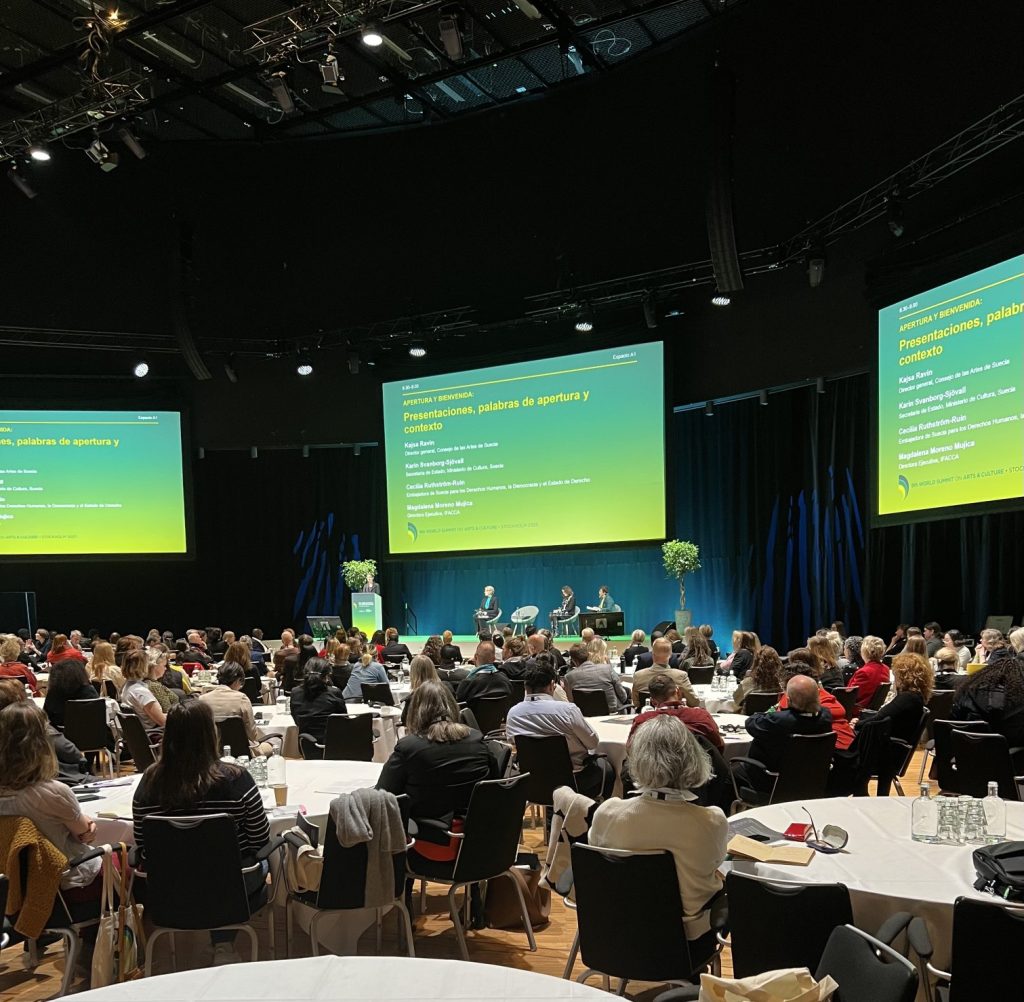
IFACCA – World Summit on Arts and Culture (Stockholm, Sweden May 2023)
The World Summit on Arts & Culture that modeled several future scenarios that could play out by the year 2050. What happens to society, art and culture itself if AI is not regulated? The scenarios were riveting (a little scary if I’m honest) and much too detailed to outline here. But as AI continues its inexorable rise, we should start to think about whose cultural voices are being recognized, whose are being amplified and whose are being silenced.
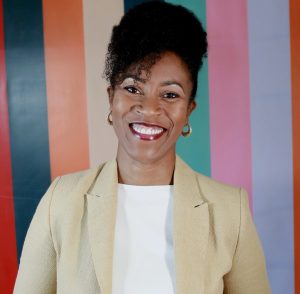
Andrea Dempster Chung, Co-founder and Executive Director
Kingston Creative
(Author’s note: No AI was harmed in the writing of this article)
Is Artificial Intelligence Set To Take Over The Art Industry? (forbes.com)
Top 10 Companies Leading AI Innovation Worldwide, 2023 – Seeromega
How do emerging technologies affect the creative economy? | McKinsey
AI-generated Drake and The Weeknd song goes viral – BBC News
Books Written By Artificial Intelligence: A List » All Good Great
Artist Talk at the Kingston Creative Hub explores Healing Through Textile Arts
Kingston Creative in collaboration with the Embassy of Colombia in Jamaica introduces the work of Virgelina Chará, Colombian human rights defender and reparations advocate

Virgelina Chará – Colombian Textile Artist and Human Rights Defender
For over eight (8) decades, Art therapy has been accepted across the world as a means of processing traumatic experiences and providing some relief for victims. In Jamaica, some visual artists and organisations have explored Art Therapy as a viable means for healing and this has been true in the Caribbean, including Colombia. On October 19, 2023, Virgelina Chará, Colombian human rights defender and reparations advocate shared with a group of visual artists, advocates and storytellers how she uses textiles to help trauma victims process and heal from their experiences.
This gathering of like-minds took place at the Kingston Creative Hub in Downtown Kingston, in collaboration with the Embassy of Colombia in Jamaica and Kingston Creative as a preamble to Healing Through Textile Arts workshops to be facilitated by Mrs. Chará in 2024 with Jamaican artists.
Virgelina Chará is a Colombian human rights defender and reparations advocate and led the “Costurero de la Memoria” (Sewing Room for Memory) which is a women run project that focuses on victims of the Colombian internal conflict to promote the recuperation of memories from the victim’s point of view as a reparation exercise cutting across different ethnic groups, regions of Colombia and genders. She is an internal refugee in Colombia who preserves the tradition of weaving of afro descendant women in Colombia and fights for the empowerment of women and marginalised communities. In some cases, the finished products represent political statements from victims in their cry for repatriation.
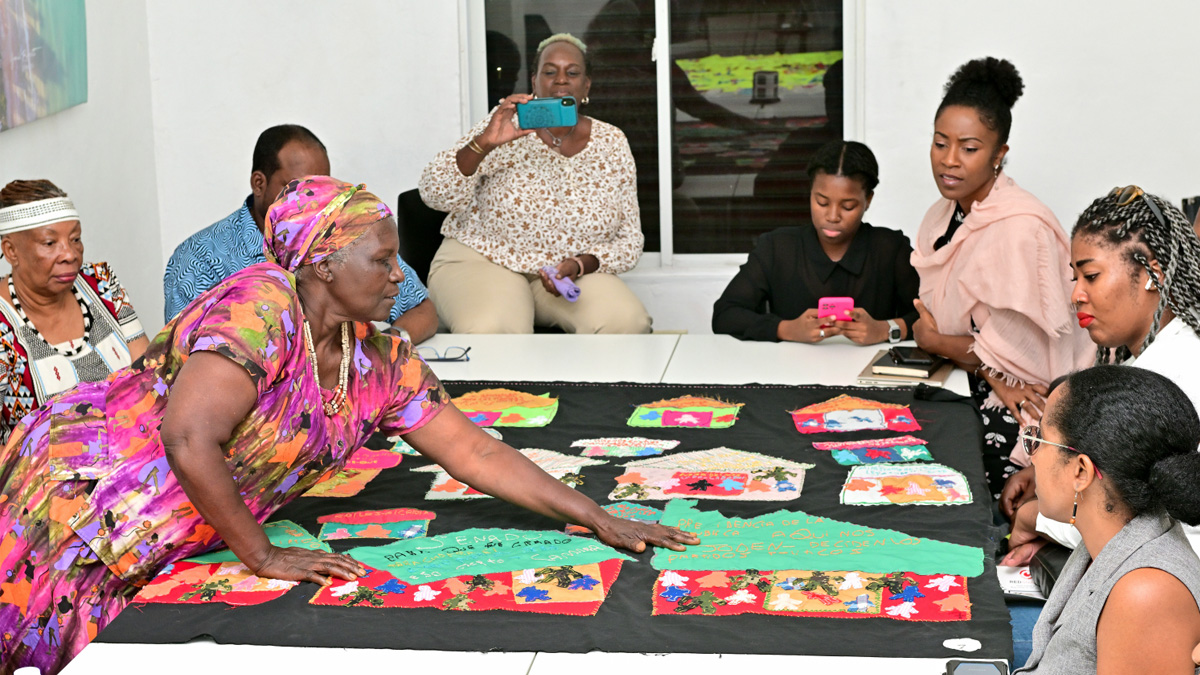
Virgelina Chará explains how Colombian refugees created this specific textile art as a political statement to government officials to take note of their challenges and as a means of Art Therapy to process their different experiences. Photo by: Stuart Reeves
The Artist Talk at the Kingston Creative Hub was attended by The Colombian Ambassador to Jamaica, Mrs. Emiliana Bernard Stephenson, Andrés Pérez-Rodríguez, First Secretary / Head of the Consular Section at the Embassy of Colombia in Jamaica, students from the Edna Manley College of the Visual and Performing Arts (EMCVPA) textile department, a lecturer from the EMCVPA textile and fiber arts, storytellers and Visual Arts who use art for healing. The interactive discussions allowed guests to interrogate the artwork presented by Mrs. Chará in the context of the work done in Jamaica and how we can incorporate more healing through arts initiatives and activities in our communities via different art forms, including textile arts.
Beat Street: Kingston as a Global Cultural Tourism Centre
By Julian “Jingles” Reynolds, Dennis Howard Ph.D., Roy Black
Jamaica has made significant contributions to worldwide popular culture despite its small size. A testimony to this fact is that in 2015, UNESCO designated Kingston, the creative nucleus, a creative city of music. Despite this considerable designation, very little has been achieved in leveraging this international recognition’s potential.
Coming out of World War 2 in the mid-1940s, Kingston began expressing its identity as a music-driven city with itinerant mento musicians and sheet music entrepreneurs such as Slim and Sam, followed by Alerth Bedasse and Everard Williams, who operated at the corner of Oxford St and Spanish Town Rd near Coronation Market. Kingston grew as a vibrant city of music with sound systems and dance hall centres in west Kingston, such as Chocomo Lawn, Pioneer Lawn, Forrester’s Hall, King’s Lawn, Jubilee Tile Garden, to east Kingston with hot spots such as Bournemouth Club, Success Club, and night clubs like Club Havana, Club Adastra in Rockfort, Glass Bucket in Half-Way-Tree, and Silver Slipper Club in Cross Roads.
Evolution of the Music
The Myrtle Bank Hotel was the premier tourist attraction offering big band music playing American and British popular music. However, the Jamaican masses comprising working class and poor black people flocked on weekends to the bars and dance halls throughout the city, entertained by the blues, jump blues, jazz and pop music of America and England. Later on, indigenous recorded music that was emerging from the Jamaican musicians, singers and producers were added to the playlists of the dance halls.
Leroy Riley, Headley Jones, Jack Taylor and Roy White were the early pioneers of downtown Kingston’s Beat Street/Orange Street music centre. Trading vinyl records imported from the American south, namely New Orleans and Memphis. During the 1940s, the sound system emerged out of the need to amplify the music to reach the masses for entertainment purposes. This was done through speaker systems on tube radios and public address systems. Headley Jones an engineer and musician eventually designed the modern sound system configurations with a simple integrated system which is the foundation of sound system technology.
Following Trinidad and Tobago’s footsteps with calypso, Jamaican mento/Caribbean calypso music burst on the international stage in the 1950s through Harry Belafonte singing calypso. Belafonte, whose parents were Jamaicans, was born in New York City and attended high school at Wolmers Boy School in Kingston, and exposed to the folk /mento culture. Belafonte was one of the world’s first popular music superstars and Hollywood actors. Kingston, in that same period of the late 1950s, gave the world a second mento/calypso music star and actor in Jamaican-born Lord Flea. While Belafonte was selling the first million-selling album, “Calypso”, on the RCA Victor label, Lord Flea was selling hit songs with albums recorded for Capitol Records. Both artists appeared in several Hollywood-produced films. In the 1960s, after producing American-influenced rhythm and blues music, Jamaican musicians created ska and Burru-influenced Rastafarian-inspired Nyabinghi genres.
Beginning In the 1960s and the ska era led by Prince Buster and Millie Small, to the ‘70s, Jamaica’s most significant cultural export emerged in the genre reggae, led by icons such Bob Marley, Peter Tosh, Toots Hibbert and Jimmy Cliff. Despite its growing international significance, the Kingston music scene from which this all emerged was never provided with the resources to make it a cultural tourist attraction. Efforts by the promoters of the famed music festival series Reggae Sunsplash of the 1980s were ignored when they suggested that reggae should be used to promote the island. Jamaica was marketed to the world as a leading tourism destination in the Caribbean, notably for sea, sand, and sunshine, but not a significant contributor to world culture. Journalists, sociologists, economists, and political scientists will query why this is so. We will not explore or offer explanations. Instead, we will posit how Kingston and Jamaica at large must benefit from this uniqueness of its tremendous cultural assets.
7 Genres of Music
Beginning in the 1950s and into the 1960s, Jamaica became known for a new cultural reality, Rastafari, that impacted the society driven by African consciousness with its teachings of peace, love, music, black awareness, and use of ganja (aka) marijuana. Kingston evolved as a musical reckoning after mento/calypso and nyabinghi, followed by five more genres of popular music that captured world attention; ska in the early 1960s, rocksteady in the mid-1960s, reggae emerging straight from rocksteady, dub arising out of the recording studios and sound system culture, and dancehall music in the late 70s.
This is unmatched by any other country. But despite this phenomenon, no Jamaican government, financial institution, entrepreneur, or international cultural agency saw the potential of a world market waiting to be exploited in the best interest of the communities of Kingston. A space that gave the world this popular music culture and lifestyle that has swept the world as a whole for seven decades has not benefitted. Cultural activists have been advocating for using our influential music culture to drive an alternative tourism product based on culture for decades. Still, this advocacy has been ignored by successive administrations and corporate Jamaica.
Parallels with New Orleans
Sounds & Pressure Foundation chairman and his late wife, upon visiting New Orleans in 1996, saw the dynamic similarities of New Orleans and Kingston, size, population, climate, notable crime rate, beautiful natural harbours, strong cultural offerings, but also the considerable dissimilarity: While New Orleans had become a leading tourist attraction in the United States, consistently ranked in the top ten places to be visited for its music, food, people, culture, Kingston (apart from a Japanese inflow of cultural tourists since the 1980s), remained unknown and unvisited despite its strong music culture around the world.
In contrast in 2019 just before the COVID-19 pandemic, New Orleans boasted revenues of (US)$11 billion, over 10 million visitors, and employed more than 50,000 workers in its cultural tourism industry.
Sounds and Pressure Foundation is proposing the development of ties between New Orleans and Kingston, with the Jamaica Tourist Board and the Office of the Mayor of Kingston reaching out to the authorities of New Orleans to have a delegation visit there from Kingston to learn first-hand how New Orleans sustains its cultural tourism vibrancy and wealth.
Kingston and New Orleans are interconnected culturally; the American city had an enormous influence on the birth of Jamaican music, as it was the rhythm & blues emerging from the American south, primarily New Orleans, that inspired the young Jamaican musicians of the 1940s and ‘50s. But interestingly, in an interview carried in the New York Times eulogising the great New Orleans entertainer Professor Longhair one of the pioneers of American rhythm & blues, he admitted that he was influenced by a “Calypso Joe,” an itinerant street musician who journeyed on the “banana boats” that plied between New Orleans and the Caribbean, to entertain New Orleanians. This was later confirmed by another great New Orleans musician Dr. John in an interview of him when he performed at a Jamaica Jazz and Blues Festival.
Developing Beat Street
The Sounds & Pressure Foundation is working in conjunction with the Tourism Enhancement Fund (TEF), the Jamaica Tourist Board (JTB), the Ministry of Culture and Entertainment, the Office of the Mayor of Kingston, and the Urban Development Corporation (UDC), and collaborating with Kingston Creative, to establish what it describes as The Beat Street Music Heritage Zone. The area from North Parade to North Street and Luke Lane to Love Lane houses over 16 music heritage sites from which the Jamaica music industry evolved, such as Forrester’s Hall the world’s premier dance hall, Big Yard, early home of reggae sensation Dennis Brown, and housed over 30 record stores, studios and offices from the 1950s to present.
Orange Street was branded “Beat Street” by music industry pioneers such as Clement “Coxsone” Dodd, and Cecil “Prince Buster” Campbell. In particular from west Parade to North Street was home for record producers such as Beverley’s Records, Prince Buster, “Coxsone” Dodd, Bunny “Striker” Lee, Sonia Pottinger, Randy’s Records, Joe Gibbs, Lee “Scratch” Perry, Clancy Eccles, Tom the Great Sebastian, Winston “Niney” Holness, Winston “Techniques” Riley, The Wailers/Tuff Gong, to name just a few.
Island Records founded by Chris Blackwell a Britisher of Jamaican parents, that became one of the most successful independent record companies in the world, originated at the corner of North Street and Orange Street where Beverley’s operated from. The Beat Street district and the community development plan of Sounds & Pressure have the potential to be a real game changer in the efforts to revitalise that specific area that has been plagued with crime and underdevelopment for decades. This is an opportunity for a truly creative city initiative and the development of a heritage tourism product in the heart of the city to benefit the people from these communities.
(Julian “Jingles” Reynolds is a novelist, filmmaker, social entrepreneur, and journalist, who operates in the U.S.A. and Jamaica. Dr. Dennis Howard is an ethnomusicologist, educator, media consultant and entrepreneur. Roy Black is a radio host, music collector, and journalist. They are co-founders along with six others of the Sounds & Pressure Foundation in 2005. )
Brother Paw by Tedecia Bromfield


only say i love you in your mother’s tongue that is when you know you mean it because we all first learn how to love through our mothers - brother paw

this is a story of a boy who lost everything and everyone but found himselfWhile he inherited his artistic abilities from his father who was a stage actor and grandfather who was a reggae artist, his very spiritual side comes from his mother. As a liberating theologian who often blogs about his religious and spiritual beliefs, he holds strong opinions about religion, some of which have caused disparities with religious adherents. As a liberating theologian, he uses biblical principles and the work of other liberating theologians to invoke advocacy. It is more humanistic and doesn’t see God’s love as restrictive or lawful but liberating. His views about gender identity and queerness also encompass a weight of his religious dogmas that doesn’t line up with traditional Christian views. ‘I’ve had garbage thrown at me for poetry I’ve written. They don’t like what I’m saying, or they don’t understand it. They interpret my words in such a way that leads them to carry out hateful deeds.’ Despite being met with strong contempt from people within the religious community, paw still strongly adheres to the belief that God is love. He believes that God is a part of all things, even love between identical genders. He categorizes himself as a Christian but one that highlights love amid everything. He often points out that the two most important rules within his religion are to love God and love your neighbour which intrinsically leads you into loving yourself. ‘You can show people who God is through them. Every action that I take must be rooted in love, everything I say and do should depict love, which always leads me back to God.
“do you believe in god?” i believe in us “what’s your sexual preference” the soul "what are your pronouns?” love, joy, peace “who do you love?” everyone, and everything because everything is love - love is the answerHe believes that morality and goodness are not based on a lot of the church’s ideologies such as sex, gender and dietary restrictions. These things he believes were legislated by man and not God. According to paw, the root of Christianity lies in caring, being compassionate and being empathetic. He also regularly practises fasting, praying, meditation and the burning of incense and sage.
the floor is the most humbling place there, on my knees do i perform my best work and service - prayerpaw also spoke of receiving pushback in another place where he hardly expected it. Italy. Sure, we all hear the racist and xenophobic stories of the black experience in European countries before we get there. We try to prepare ourselves for possible slander, possible offhanded comments, the possible slur. But it is a completely different and overwhelming experience when you’re faced with it. During his second year, brother paw participated in a university exchange program where he moved to Italy for a semester. Here he discovered his love for teaching as he taught the English language to local students while studying English Literature and Theology. ‘Being in Italy was amazing. But what shocked me was the overwhelming racism. My own students called me a monkey. It was a big eye-opener. People can try to be so good to others and for others. But all this good might not change anything.’ In his piece ‘rotten to the core’ his lines display this frustration:
the world would be so much sweeter if everyone weren’t so saltyHe realized that within the European countries that he travelled to; the black body was not properly represented. While the white body is encompassed as art, worshipped for its ethereal beauty through paintings, photographs and sculptures, the black body was either absent or subjugated to merely an object. There has been a worldwide struggle to incorporate black art that isn’t shadowed by slavery or struggle into notable museums. At first, there was a struggle to get black art recognized in the art community. However, a movement brewing in the 1960s would soon change all this. It started with the Black Arts Movement that surged in the United States during the 60s. It co-occurred along the Black Power Movement, a political and social crusade for racial pride, self-sufficiency, and equality for all people of the black race. This movement was so powerful that it permanently jarred the cultural landscape of the western world. It revolutionized black art and literature, eventually birthing contemporary artists like Basquiat who changed the game for contemporary black art.


coated in sugar doused in water bathed in lemon perfumed with love this is a story about a soul who found a boy and the two became one flower. - lemonade.‘What do you want people to take away from all your work?’ I ask in finality. He paused and thought for a second. ‘That above all, love is the cure. That there are so many perspectives to life and people who are being hurt by our actions. This isn’t right, and we must do all we can to help those who may be less privileged than us, despite their background of race, gender, sexual orientation or religion.’ You can find paw’s book, ‘lemonade.’ on Amazon and his photography on Instagram @paawtography
